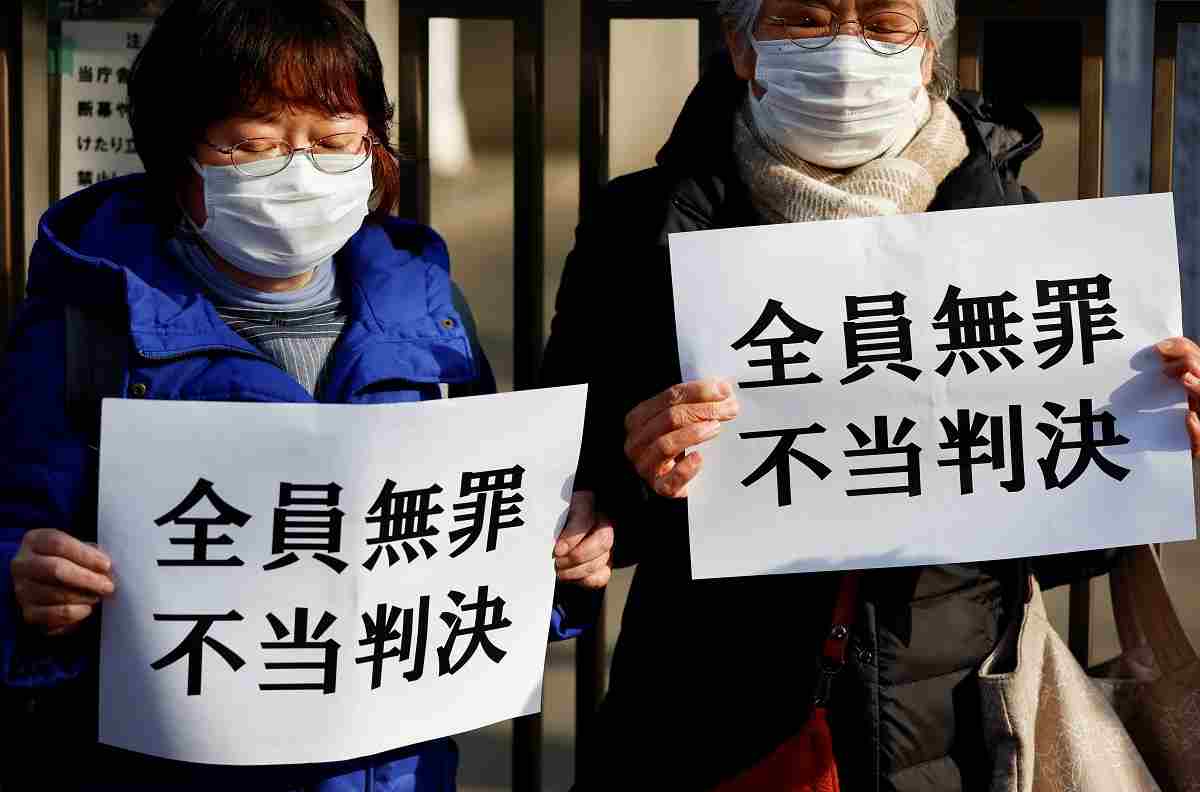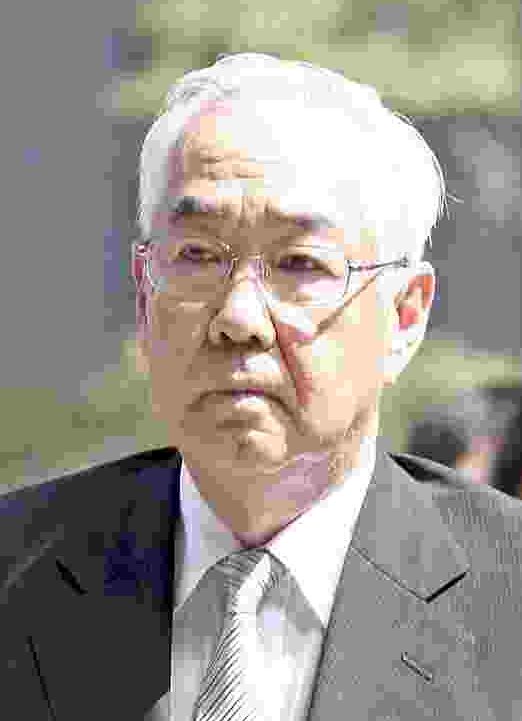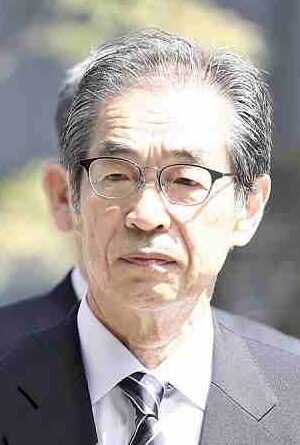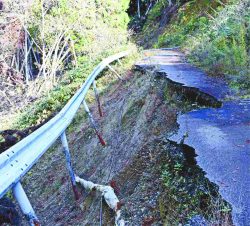
Yoshiko Furukawa and Etsuko Kudo, support group members of plaintiffs, show off banners reading “All innocent. Wrongful judgment” after the Tokyo High Court upheld a not guilty verdict for former Tokyo Electric Power Co. executives of negligence over the 2011 Fukushima nuclear power plant accident, in front of the court in Tokyo on Wednesday.
18:56 JST, January 19, 2023
The Tokyo High Court has upheld a lower court ruling that acquitted three former executives of what was then Tokyo Electric Power Co. of criminal negligence over the 2011 accident at the Fukushima No. 1 nuclear plant, concluding that the three could not have foreseen the massive tsunami that triggered the accident.
In a high-profile case based on the unprecedented accident, the high court on Wednesday dismissed an appeal by court-appointed lawyers, who were designated to act as prosecutors, who sought the annulment of a Tokyo District Court ruling that had acquitted the three defendants of charges of professional negligence resulting in death.

Sakae Muto

Ichiro Takekuro

Tsunehisa Katsumata
The three are former TEPCO Chairman Tsunehisa Katsumata, 82, and former executive vice presidents Ichiro Takekuro, 76, and Sakae Muto, 72.
Presiding Judge Keisuke Hosoda said, “The lower court decision that the massive tsunami was unforeseeable is reasonable.”
The lawyers for the prosecution are considering whether to appeal the high court ruling.
Takekuro and Muto appeared in court on Wednesday, while Katsumata was absent for health reasons. The three defendants had authority over nuclear power plants when the accident happened in March 2011.
The trial had two main points of contention: whether the three could have predicted the tsunami, and whether they could have taken measures to prevent the nuclear accident.
Regarding the first point, the specific focus was on the reliability of a long-term assessment released by the government in 2002 that presented the possibility of massive earthquakes off Fukushima Prefecture and other places, as well as of a projection made by a TEPCO subsidiary based on the assessment that a tsunami of up to 15.7 meters could hit the nuclear power plant.
Citing points such as that the long-term assessment specified in its preface that the probability of earthquakes and other data include margins of error, the high court ruled that neither the assessment nor the projection made the defendants aware in real terms of the possibility that a tsunami could strike the plant, which was located 10 meters above sea level.
In light of that, the court also found that utility companies, which provide one of the most important aspects of infrastructure for people’s lives, are legally obligated to supply electricity and cannot shut down nuclear power plants for unsubstantiated reasons.
Similar to the district court, the high court concluded that the defendants could not be held criminally liable, saying, “The three did not have an obligation to stop the operation of the plant to prevent the accident because they could not have predicted the tsunami.”
In the appeal trial, the lawyers for the prosecution argued that the accident could have been prevented if seawalls had been built and waterproofing measures had been taken. However, the court ruled that these arguments were “based on information and knowledge obtained after the accident.” It also said, “There is no proof that the accident could have been prevented if countermeasures had been taken,” as the height and direction of the actual tsunami greatly differed from a tsunami that had been hypothetically assumed.
The indictment alleged that the three former executives failed to take measures against a massive tsunami although they could have predicted it, and that their negligence resulted in the deaths of 44 people, including patients who were evacuated from Futaba Hospital in Okuma, Fukushima Prefecture.
The Tokyo District Public Prosecutors Office had dropped the case against the three twice, but they were later indicted under the mandatory indictment system after a panel of citizens called a committee for the inquest of prosecution made a decision in favor of the indictment.
Since the mandatory indictment system was introduced in 2009, a total of 14 defendants have been indicted in 10 cases, including the nuclear accident case. There have been finalized convictions of only two defendants in two cases.
Shareholder derivative suit
In a derivative lawsuit filed by TEPCO shareholders, the Tokyo District Court recognized individual liability regarding the accident for the first time when it ordered four former TEPCO executives, including the three, to pay a total of ¥13 trillion, in July last year. The district court ruled that the government’s long-term assessment was reliable, and that the accident could have been prevented.
However, in a separate civil case against the government, the Supreme Court concluded in June last year that the tsunami was larger than predicted, so that the accident could not have been prevented even if seawalls had been built. This decision aligns with the high court’s ruling on Wednesday. It remains to be seen whether the district court ruling in the shareholder derivative suit will be upheld by the higher court.
No one responsible?
Following the high court ruling on Wednesday, a 71-year-old construction worker who lost his mother in connection with the accident and evacuated to Iwaki, Fukushima Prefecture, after the accident, said, “Doesn’t anyone have to take responsibility for causing such an accident?”
His then 88-year-old mother was a resident of a geriatric health care facility adjacent to Futaba Hospital, and was one of the 44 people regarded as victims of the accident in the trial.
After the ruling, the five lawyers for the prosecution held a press conference in Tokyo. “This is absolutely unacceptable as it sticks to the government’s nuclear policy and disregards the significance of the long-term assessment,” said Shozaburo Ishida, one of the lawyers.
Tokyo Electric Power Company Holdings, Inc. reiterated an apology for the accident, but refrained from comment on the ruling.
Related Tags
"Society" POPULAR ARTICLE
-

M4.9 Earthquake Hits Tokyo, Neighboring Prefectures
-

Israeli Tourists Refused Accommodation at Hotel in Japan’s Nagano Pref., Prompting Protest by Israeli Embassy and Probe by Prefecture
-

M7.5 Earthquake Hits Northern Japan; Tsunami Waves Observed in Hokkaido, Aomori and Iwate Prefectures
-

Tsukiji Market Urges Tourists to Avoid Visiting in Year-End
-

M5.7 Earthquake Hits Japan’s Kumamoto Pref., Measuring Upper 5 Intensity, No Tsunami Expected
JN ACCESS RANKING
-

Tokyo Economic Security Forum to Hold Inaugural Meeting Amid Tense Global Environment
-

Keidanren Chairman Yoshinobu Tsutsui Visits Kashiwazaki-Kariwa Nuclear Power Plant; Inspects New Emergency Safety System
-

Imports of Rare Earths from China Facing Delays, May Be Caused by Deterioration of Japan-China Relations
-

University of Tokyo Professor Discusses Japanese Economic Security in Interview Ahead of Forum
-

Japan Pulls out of Vietnam Nuclear Project, Complicating Hanoi’s Power Plans























